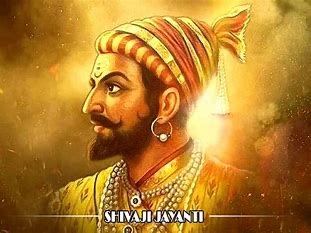CONTENTS
- Chhatrapati Shivaji
- Supreme Court of India’s Order on Advertising
Chhatrapati Shivaji
Context:
To commemorate and celebrate the 350th anniversary of the grand coronation of Chhatrapati Shivaji Maharaj, the significant day in our nation’s history, an exhibition titled Chhatrapati Shivaji Maharaj: Celebration of the 350th Anniversary of the Great Coronation is being presented at National Gallery of Modern Art, (NGMA) Jaipur House, New Delhi.

Relevance:
GS I- History
Dimensions of the Article:
- About Chhatrapati Shivaji
- Shivaji and the Mughals
About Chhatrapati Shivaji
- Born on February 19, 1630, at Shivneri Fort in Pune.
- He was born to Shahaji Bhonsle, a Maratha general who ruled the Bijapur Sultanate’s jagirs of Pune and Supe. Shivaji’s mother was Jijabai, a devout woman who had a strong religious influence on him.
- Shivaji’s name was derived from the name of a provincial deity, Goddess Shivai.
- He created the Maratha Empire by carving out an enclave from the crumbling Adilshahi sultanate of Bijapur.
- He was formally crowned Chhatrapati (Monarch) of his dominion in Raigad in 1674.
- Religious tolerance and functional integration of the Brahmans, Marathas, and Prabhus ensured the kingdom’s security.
- With the support of a disciplined military and well-structured administrative organisations, he constructed a competent and progressive civil rule.
- He had a ministerial council (Asht Pradhan) to advise him on state problems, but he was not bound by it. He had the authority to appoint or fire them.
- He pioneered non-conventional methods (guerrilla warfare) and used strategic elements such as terrain, speed, and surprise to innovate military tactics.
- To defeat his larger and more powerful opponents, he concentrated on pinpoint attacks.
- Although the courageous warrior died in 1680, he is remembered for his bravery and intelligence.
Shivaji and the Mughals
- Shivaji’s meteoric rise posed challenges to the suzerainty of the Mughals.
- His first direct encounter with the Mughals was during Aurangzeb’s Deccan campaigns of the 1650s.
- As Aurangzeb went North to fight for the Mughal throne, Shivaji was able to seize further territory.
- His tactics against the Mughals were adapted to the specific nature of his force and the flabby Mughal armies. Using swift cavalry attacks, he would raid and pillage Mughal strongholds.
- While on the rare occasion he would engage in battle to actually capture and hold Mughal positions, most often, he would simply cause much menace, raid the treasury, and leave with the Mughals in terror and disarray.
- Famously, in 1664, he attacked the port of Surat (now in Gujarat) and plundered one of the richest and busiest commercial towns of Mughal India while the local governor hid in a nearby fort.
- As the legend of Shivaji and the physical sphere of his influence grew, Aurangzeb sent a 100,000-strong, well-equipped army under Raja Jai Singh I to subdue him in 1665.
- After putting up a valiant fight, Shivaji was besieged in the Purandar hill fort.
Supreme Court of India’s Order on Advertising
Context:
Recently, the Supreme Court of India has ordered that all advertisers/advertising agencies must submit a ‘Self-Declaration Certificate’ before publishing or broadcasting any advertisement.
Relevance:
GS II: Polity and Governance
Supreme Court’s Order on Advertisements
New Requirement
- Mandate: All advertisers and advertising agencies must submit a ‘Self-Declaration Certificate’ before publishing or broadcasting any advertisement.
- Effective Date: Applies to all new advertisements from 18th June 2024.
Purpose
- Goals: Ensure transparency, consumer protection, and responsible advertising practices.
Compliance and Guidelines
- Regulatory Compliance: Adherence to relevant regulatory guidelines, including:
- Rule 7 of the Cable Television Networks (CTN) Rules, 1994.
Norms of Journalistic Conduct of the Press Council of India.
- Rule 7 of CTN: Advertisements must comply with Indian laws and avoid offending the morality, decency, and religious sensitivities of viewers.
Submission Process
- Certificate Submission:
- For TV/Radio Advertisements: Broadcast Seva Portal.
- For Print and Digital Media Advertisements: Press Council of India portal.
Record Keeping: Advertisers must provide proof of uploading the Self-Declaration Certificate to the relevant broadcaster, printer, publisher, or electronic media platform for their records.




